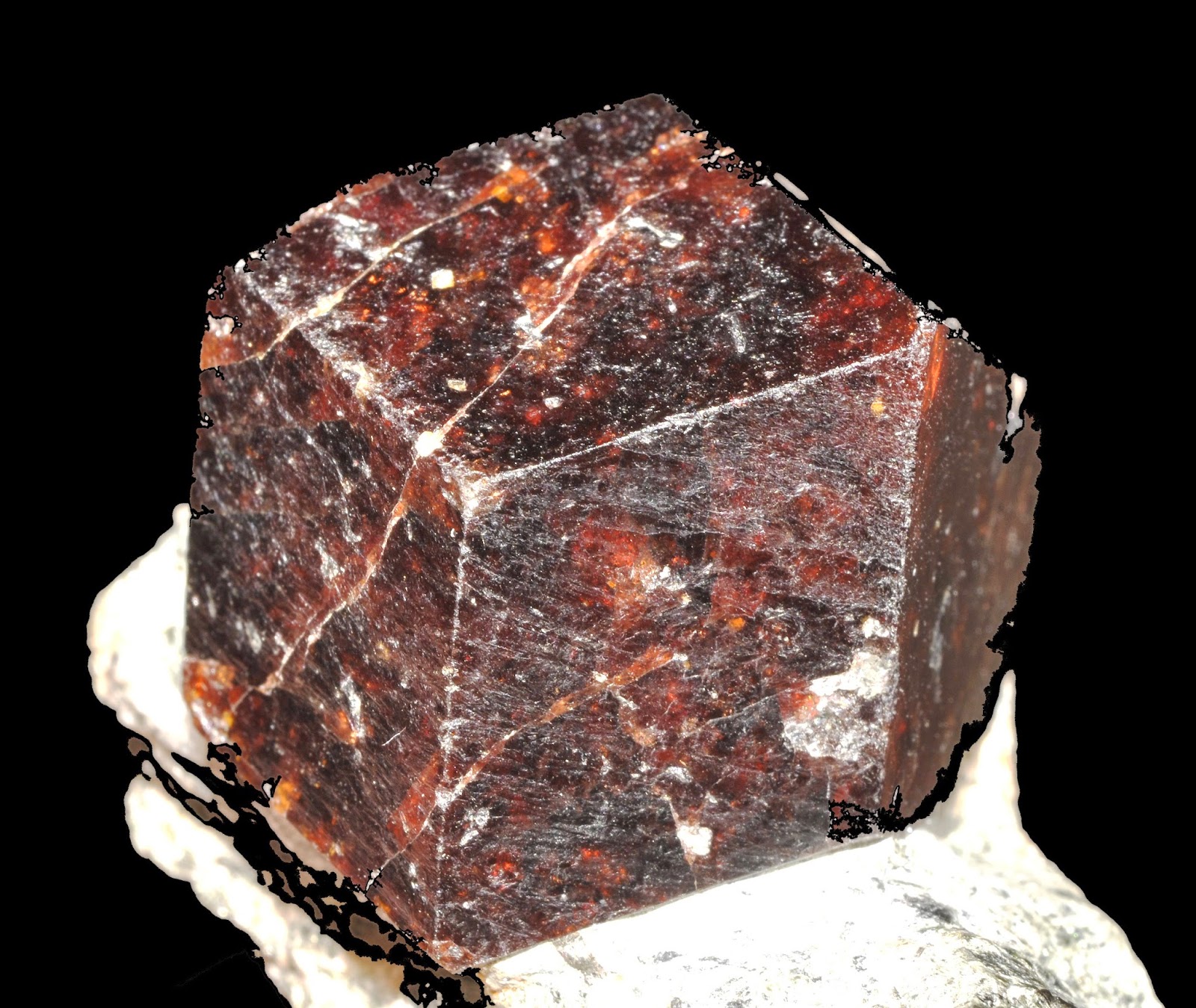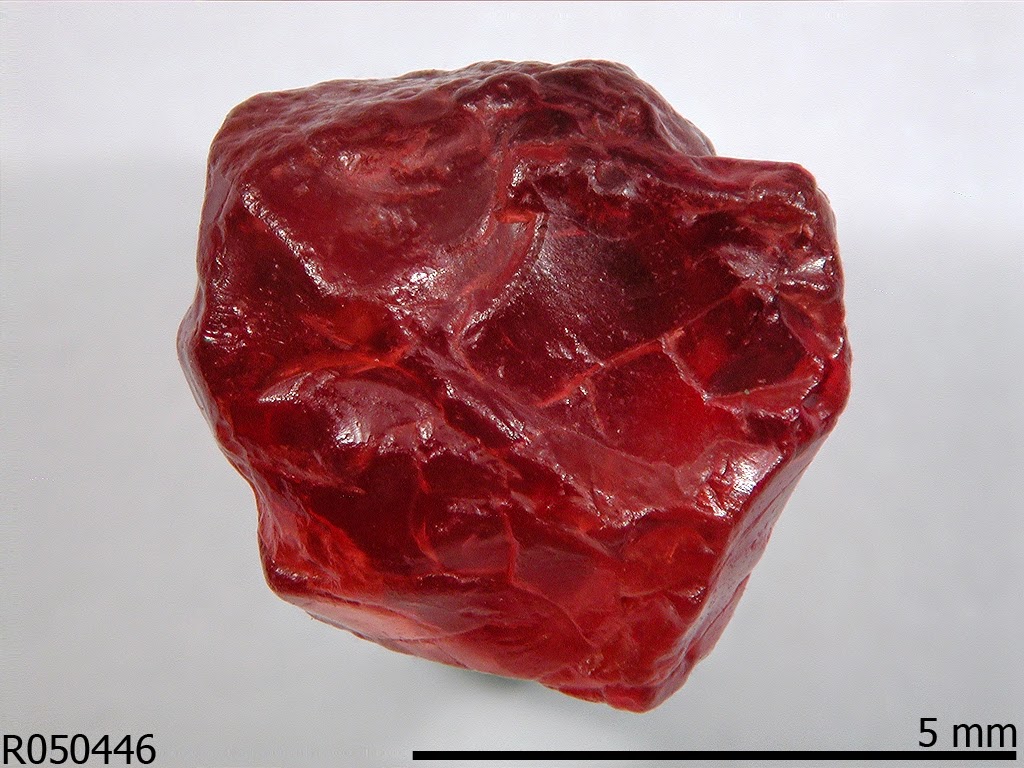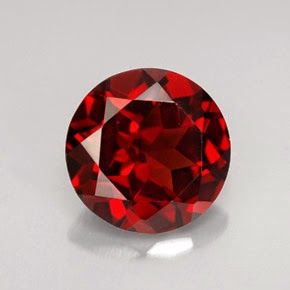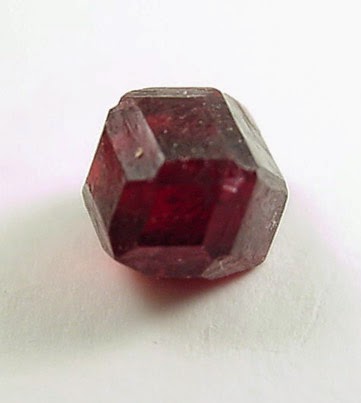
Chemical Formula: Mg3Al2(SiO4)3
Locality: Zoblitz, Germany.
Name Origin: From the Greek, pyropos, “fiery-eyed” in allusion to the red hue.
The mineral pyrope is a member of the garnet group. Pyrope is the only member of the garnet family to always display red colouration in natural samples, and it is from this characteristic that it gets its name: from the Greek for fire and eye. Despite being less common than most garnets, it is a widely used gemstone with numerous alternative names, some of which are misnomers. Chrome pyrope, and Bohemian garnet are two alternative names, the usage of the latter being discouraged by the Gemological Institute of America.Misnomers include Colorado ruby, Arizona ruby, California ruby, Rocky Mountain ruby, Elie Ruby, Bohemian carbuncle, and Cape ruby.
The composition of pure pyrope is Mg3Al2(SiO4)3, although typically other elements are present in at least minor proportions—these other elements include Ca, Cr, Fe and Mn. Pyrope forms a solid solution series with almandine and spessartine, which are collectively known as the pyralspite garnets (pyrope, almandine, spessartine). Iron and manganese substitute for the magnesium in the pyrope structure. The resultant, mixed composition garnets are defined according to their pyrope-almandine ratio. The semi-precious stone rhodolite is a garnet of ~70% pyrope composition.
The origin of most pyrope is in ultramafic rocks, typically peridotite from the Earth’s mantle: these mantle-derived peridotites can be attributed both to igneous and metamorphic processes. Pyrope also occurs in ultrahigh-pressure (UHP) metamorphic rocks, as in the Dora-Maira massif in the western Alps. In that massif, nearly pure pyrope occurs in crystals to almost 12 cm in diameter; some of that pyrope has inclusions of coesite, and some has inclusions of enstatite and sapphirine.
Pyrope is common in peridotite xenoliths from kimberlite pipes, some of which are diamond-bearing. Pyrope found in association with diamond commonly has a Cr2O3 content of 3-8%, which imparts a distinctive violet to deep purple colouration (often with a greenish tinge) and because of this is often used as a kimberlite indicator mineral in areas where erosive activity makes pin pointing the origin of the pipe difficult. These varieties are known as chrome-pyrope, or G9/G10 garnets.
History
Discovery date: 1803
Town of Origin : LNS
Country of Origin : TCHECOSLOVAQUIE
Chemical properties
Subclass : Neosilicates
Group : GRENATS
Chemical Formula : Mg3Al2(SiO4)3
Impurities: Fe;Mn;Ca
Optical properties
Refractive Index : 1,71
Physical properties
Hardness: from 7,00 to 7,50
Density: 3,58
Color : pinkish red; violet red; orange red; black; purplish red; red; black red
Luster: vitreous; resinous
Streak: white
Break: conchoidal
Cleavage : NO
Photos:













